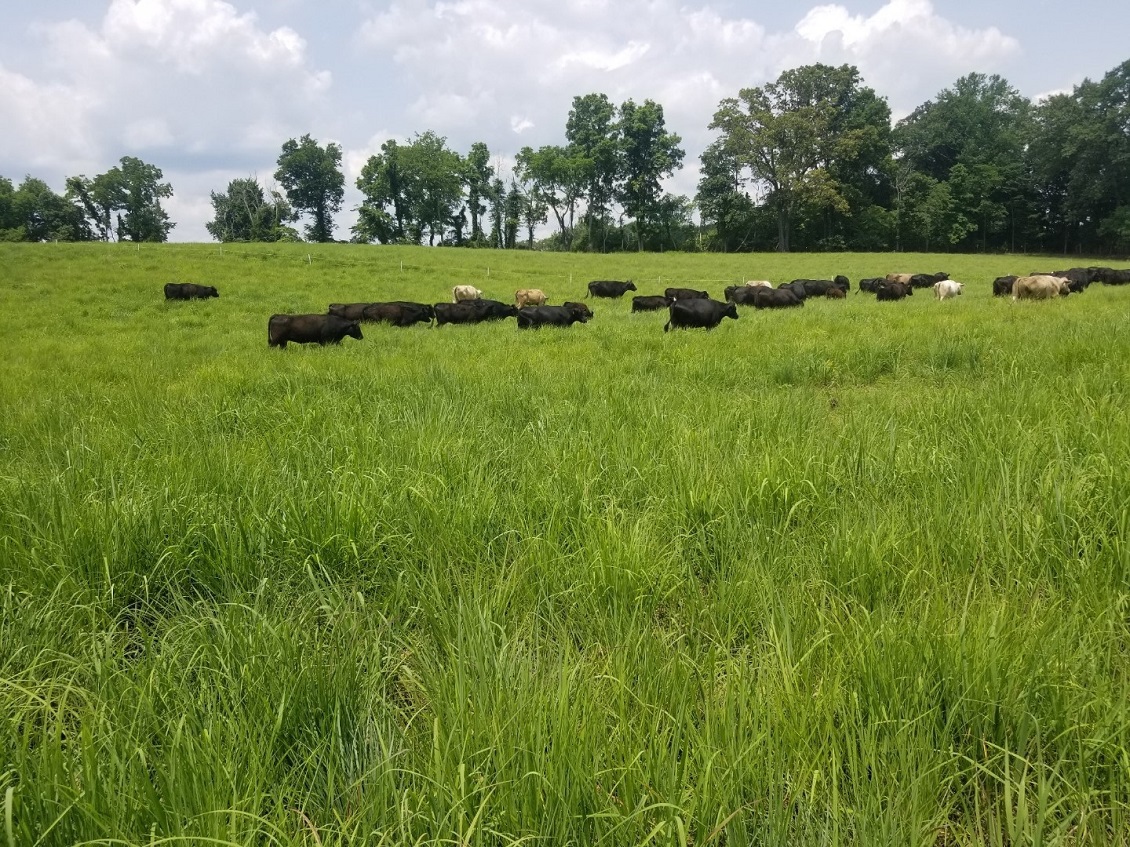
A New Book Available Through UT Extension Provides a Holistic Guide for Native Grass Producers
KNOXVILLE, Tenn. — Native grasslands were once plentiful across what is now the United States, including tens of millions of acres across eastern U.S. landscapes. The plow, exclusion of fire leading to forest succession, and year-round, unmanaged grazing led to their gradual disappearance over the past two centuries. Today, less than two percent of our once vast native grasslands – also known as prairies, glades and savannahs – remain. Within the eastern U.S., there are even fewer remnants of these productive and ecologically important plant communities.
Native grasses are well known for their massive root systems. It is these roots that enable them to store large amounts of carbon within the soil and, as a result, could make native grasses a strategic tool for reducing carbon levels in our atmosphere. These same roots also improve soil health, reducing runoff and soil loss, and make these grasses remarkably drought tolerant. For these reasons and more, there is a renewed interest in and awareness of the importance of grasslands, especially those native to the U.S.
For example, big bluestem, which was the dominant species across more than 100 million acres of U.S. grasslands, has also been shown to be excellent forage for cattle and other livestock.
Native grasslands also provide essential habitat for many at-risk species, making an important contribution to improved biodiversity. They fulfill habitat needs for many species, including pollinators and rapidly declining grassland-associated birds like the northern bobwhite, a once common game bird throughout the southern and eastern U.S.
With his new book, Native Grass Forages for the Eastern US, Pat Keyser, professor and director of the Center for Native Grasslands Management at the University of Tennessee Institute of Agriculture, shares decades of experience combined with the latest science on using these grasses in twenty-first century agriculture.
Keyser’s book provides a holistic view of using native grasses on today’s farms. Organized into five sections, the book provides comprehensive and practical information on using these grasses including life history, establishment, management, troubleshooting, and benefits of these species. References listed in every section, more than 250 in all, provide readers with a treasure trove of additional information. More than 200 graphs, charts, tables and pictures illustrate many of the concepts presented in the text. Appendices provide in-depth information on seed vendors, seedling identification tips and additional resources.
Keyser notes, “American agriculture has led the world because of relentless pursuit of innovation. When it comes to grasslands that support our livestock and benefit our environment, our soils, our climate, our wildlife, it appears that what has grown here for millennia, and is so well adapted to our conditions, may actually be a key innovation for maintaining profitable, productive and sustainable farms well into the future.”
Don Ball, professor emeritus with Auburn University and co-author of the widely recognized gold standard of grassland agriculture, Southern Forages, endorsed Keyser’s book as a remarkable achievement that may come to be viewed as a classic agricultural publication. Another prominent leader in forages, agreed. Jimmy Henning of the University of Kentucky, says Native Grass Forages is “essential reading for farmers and grassland professionals alike.”
Hardcopies of the book are available for purchase through UT Extension online for just $25.
The UT Department of Forestry, Wildlife and Fisheries is part of the Herbert College of Agriculture, UT AgResearch and UT Extension at the University of Tennessee Institute of Agriculture. The curricula focus on a mastery learning approach, emphasizing practical, hands-on experiences. FWF’s faculty, staff and students conduct research and extension that advances the science and sustainable management of our natural resources. For more information, visit fwf.tennessee.edu.
Through its land-grant mission of research, teaching and extension, the University of Tennessee Institute of Agriculture touches lives and provides Real. Life. Solutions. utia.tennessee.edu.